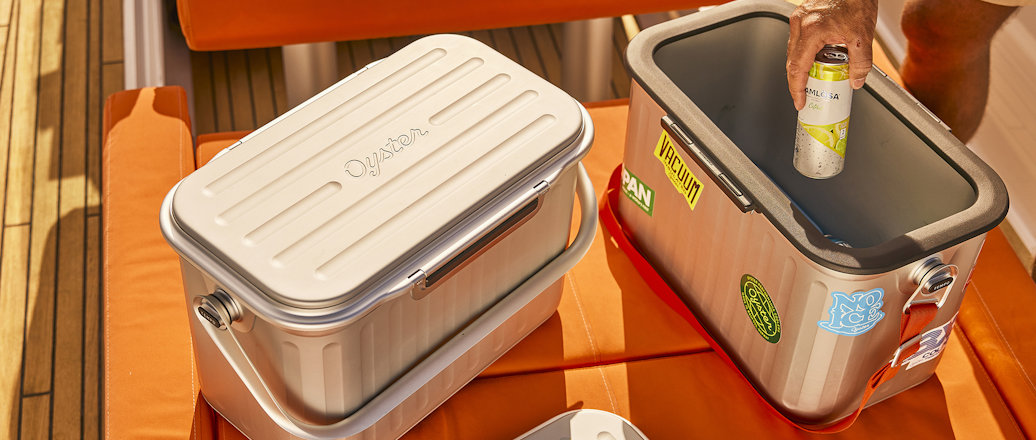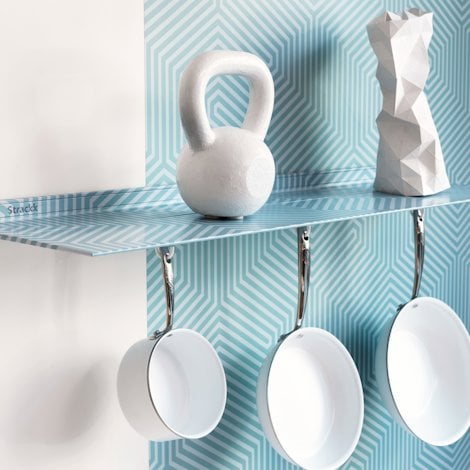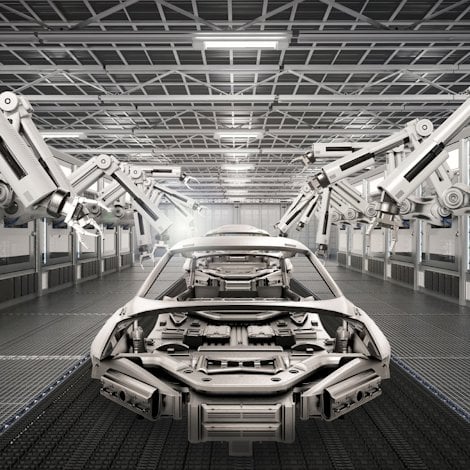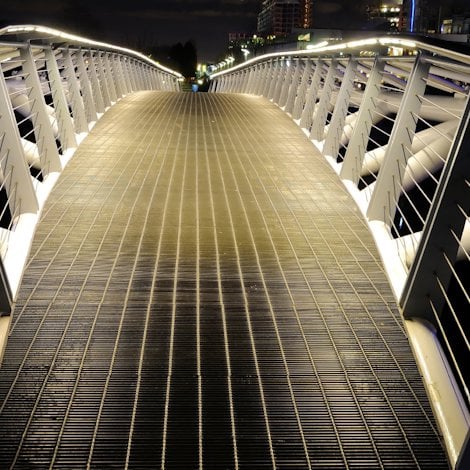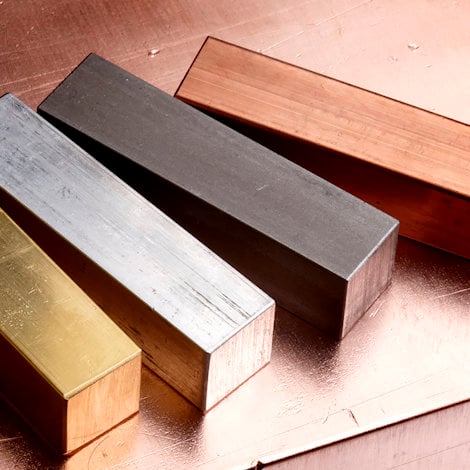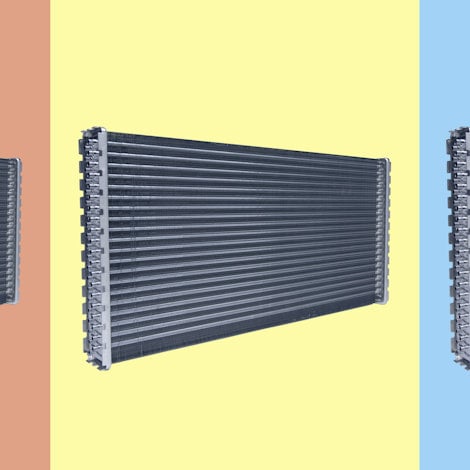How we use the thermal properties of aluminium to create an innovative cooler
It took us seven years to develop a vacuum-insulated food and drink cooler that would outperform everything else on the market. To do that, we had to find a material that could provide the technical functionality that our design required. In the end, choosing aluminium was not really a choice for us but a necessity. It was one of the only materials available that met our requirements.
Need of some good advice for designing with aluminium? Check out Hydro's Design Manual.
The world's first performance cooler uses the same insulation technology as you find in a thermos, only this is in a box. This was the key: being able to do vacuum insulation in a square form. It was a big challenge, too, because unsupported flat surfaces tend to implode when subjected to a vacuum.
We found that aluminium would allow us to achieve what we wanted with the vacuum chambers in the lid and in the tub. But as we discovered along the way, aluminium has some other amazing properties useful for a cooler.
A new type of cooler
Our cooler – we call it the Oyster Tempo – doesn’t need ice. This alone is a new customer experience.
What we discovered when we started looking into coolers or insulated boxes, was that the whole segment had basically been standing still for 50 years. Most coolers are made with a mixture of polyethylene plastic and polyurethane foam, which in itself is not a sustainable manufacturing technology. If you want to recycle a traditional plastic cooler, you would essentially need to use a chisel to manually remove the polyurethane foam from the plastic shell. The polyurethane is also a thermoset polymer, meaning it cannot be melted down and will contaminate the recyclable plastic shell layer.
In addition to that, we discovered that the traditional cooler is not actually a very efficient cooler. It's rugged and durable, sure, but it is also bulky and heavy and doesn't do a great job with what you put inside it. Then we looked at the thermos, and thought: How can we create the same insulation in a box?
The insulation technology we use is six times more efficient than what is available in traditional plastic coolers. This led us to rethink the entire construction of a cooler. The vacuum insulation allowed us to reduce the wall thickness by two-thirds and still have twice the insulation ability of a traditional plastic cooler.
Aluminium as a vacuum barrier
The large storage tub of the Oyster Tempo is a sealed vacuum chamber, but so is the lid. What's important with a vacuum chamber is to maintain its vacuum over time. This is not an easy task. That means the shell material encapsulating the chamber needs to be virtually impermeable to gases.
Aluminium is one of the few materials that we could work with that provided this. It is airtight, basically.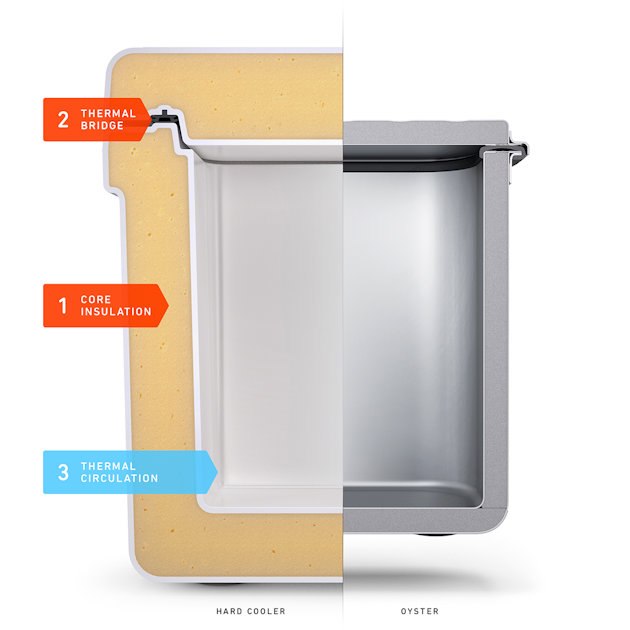
Aluminium as a thermal distributor, too
A surprise for us was that aluminium also has some incredible properties in terms of distributing the thermal energy evenly throughout the inside of the cooler. When you open it and put your hand inside, you can feel that the air is cold – and the walls are even colder.
Aluminium’s efficient temperature distribution also means a quick cooldown: from hours to minutes. The cooler’s inner wall surfaces conduct thermal energy 380 times faster around the walls compared to a plastic shell. This allowed us to move away from large amounts of loose ice cubes and start using smaller, dry-storage ice packs to keep the cooler cold and free up storage space.
The Tempo cooler has two thin-walled aluminium shells, with a fumed silica core between them. This core keeps the walls from collapsing from the vacuum pressure. By comparison, a cylindrical thermos uses stainless steel inner and outer walls, welded together at the top lip creating a thermal bridge where heat energy can travel more freely. So stainless steel is chosen for thermoses in part due to its much lower thermal conductivity compared to aluminium.
Our patented technology allows us to use aluminium in the cooler by thermally de-coupling the inner and outer shells, while maintaining an impermeable barrier.
Design for repair and reuse – and recyclability
We as designers have the ability to promote the direction of a product very early in its conceptual stage, during planning. We can move the product in certain directions.
With Oyster Tempo, it was important for us to be able to recycle the product. Ours is actually the first cooler with any type of performance that is fully recyclable.
But to be honest, the last thing you want to do is recycle. Reuse or repair is better than recycling. We wanted to make sure that you could repair the product or reuse parts of the product that are not damaged, easily. That was the core of our design process; that you could – without any tools – take the product apart for repair or cleaning. We achieved that.
Aluminium as visual aesthetic
As an industrial designer, I think you always get excited when you're allowed to work with metal because metal has properties that are difficult to recreate with plastic. And metal has a quality feeling to it from the get-go. It helps you to create a desirable product.
We chose aluminium for almost all of the components. It is lightweight and strong, and it was possible for us to form the aluminium to our geometry, to create a square box. And for the outside of the cooler, aluminium has this natural finish that is beautiful. As a bonus, it also has some fantastic properties in terms of reflecting radiant heat from the sun.
We use an 8006 alloy for the larger shell parts. This alloy has excellent thermal conductivity and corrosion resistance, excellent formability for our complex forming operations, and it’s strong. We use the 5754 alloy for some of the other smaller parts, and again corrosion resistance and strength are key properties.
Aside from the fumed silica insulation, there are only a few smaller components in the Oyster Tempo that are manufactured from plastic or rubber materials, simply due to functionality that wasn’t possible with metal.
We have several products in the pipeline for the future, and I think aluminium is now at the core of our brand and the visual aesthetic of the brand. So, I think we're going to be trying to make stuff out of aluminium as much as we can. It will be exciting to see what we can do with aluminium in the future.

